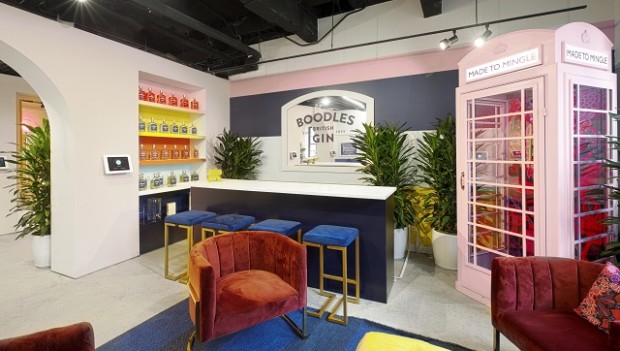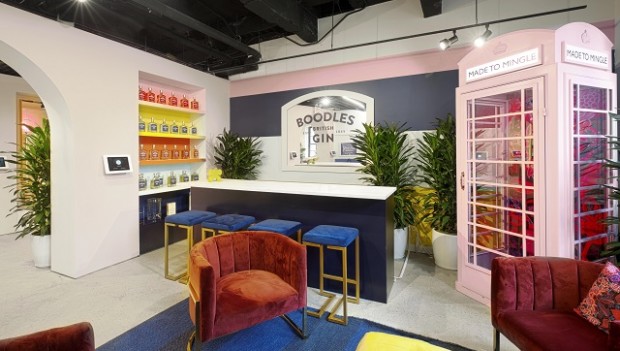
From hiring actors to featuring large-scale installations, Showfields is one of the most exciting retailers in New York, putting direct-to-consumer brands in the spotlight. We chat with co-founder Tal Zvi Nathanel about the future of consumer commerce and the art of creating in-store drama.
Describe the Showfields in-store experience. Why and how did you come up with the concept?
Showfields is made up of ‘show’ and ‘fields’. The word ‘show’ is the store’s ability to be more than a shopping destination but to provide guests with an entertaining atmosphere that will leave them with a lasting memory (like the House of Showfields and Loft). ‘Fields’ are the spaces telling the story of brands. Showfields’ in-store experience is the journey between the two, giving guests the magic of discovery by touching, smelling, eating and testing all the products and artwork.
We believe that the future of retail is c-commerce (consumer commerce) and a large part of that is community, which is why we created The Loft in NoHo, New York – a whole floor dedicated to community building. The Loft is a community space that hosts everything from panels, to yoga, to private concerts. We have hosted over 150 events in the last six months and people that sign up for our newsletter get early access to reserving spots at them. For us, it is not about trying to sell to that customer, it is about creating a home for the NoHo community.
How has the concept evolved since launch? What have been some of the insights you’ve learnt about retail and customers?
Showfields is a stage. We are only the platform. The real stars are the brands and artists in that space and that’s what constantly changes according to the needs of our customer, locations and the time.
Since we launched, we’ve gone from one floor to four, with one level completely dedicated to community building. Outside of brands to discover and shop from, we launched our very first experience – a one-of-a-kind retail theatre experience show called House of Showfields.
More generally, we evolve on a daily basis. We have a data platform that allows us to see how many people visited the space, what products they touched, how long they stood there and more. This data allows us to optimise not only the brand spaces, but the store as a whole in order to meet the needs of consumers.
What have been some of the challenges of creating an experience like Showfields?
It was an uphill battle in the wake of what was being deemed ‘the retail apocalypse’ to convince investors and brands that physical retail was not dead, it just needed to evolve. From raising a $9 million seed round to convincing our first curation of brands to be part of Showfields while it was still a construction site, we have faced challenges at every turn.
Most notably, our flagship location at 11 Bond Street is a 106-year-old historic landmark building. This clearly poses challenges when it comes to construction and timelines. We were very fortunate to have co-founder Amir Zwickel at the helm of construction and expansion as we were able to open only three weeks after we poured the slab on our first floor.
What plans do you have for the Showfields business in the next 12 months?
In addition to new locations, we’ll be welcoming several new brands for our March 2020 curation and launching new consumer-facing tools to help customers engage with the brands within Showfields.
Brands are only as strong as their connection to customers. If they want to succeed, it is about listening, changing, challenging assumptions, and creating systems where they are flexible enough to do those things as quickly as possible. Of course, if that was not already challenging enough, they need to always stay true to their values, their brand and outlook on the world.
What do you think has led to the influx of D2C brands and where do you think it’s going?
Retail isn’t dying, it’s evolving. Although we constantly hear about stores closing, 70 per cent of millennials actually prefer visiting bricks-and-mortar locations, and digital-first brands from Casper to Untuckit are opening up physical stores. As retail continues to evolve, I am confident that c-commerce will be the next iteration, and I’ve broken it down into five key components that brands should focus on to better connect with their customers:
- Convenience: Because of the cost, 95 per cent of emerging brands cannot open a store. Showfields enables them to choose the space, location and message they present in a more affordable way.
- Content: Companies shouldn’t think about what their customers can do for them, but what they can do for their customers. Today’s customer is looking for authenticity; creating an Instagrammable moment is not enough.
- Community: Understand what community you’re trying to embrace and offer them a physical place where they can interact with other like-minded people.
- Curation: Every brand’s voice is more important today than ever. Customise the experience for each individual customer – think Spotify or Netflix – to build an emotional bond.
Connection: If we want to bridge the physical and the digital, the customer expects everything to be seamless and to work flawlessly regardless of channel.







